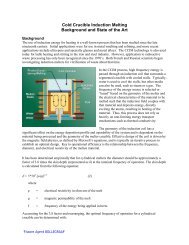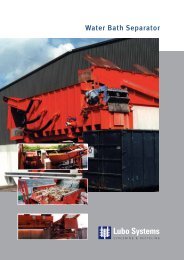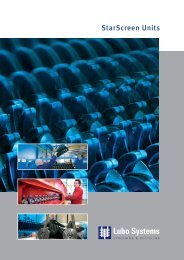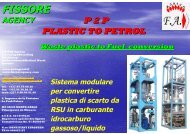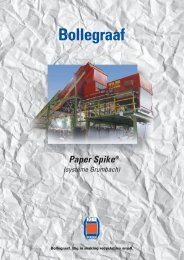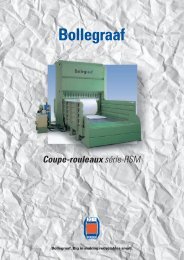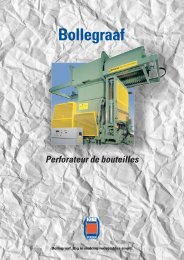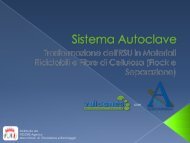3) P2P FROM PLASTIC TO PETROL - Mar 08 - FISSORE Agency
3) P2P FROM PLASTIC TO PETROL - Mar 08 - FISSORE Agency
3) P2P FROM PLASTIC TO PETROL - Mar 08 - FISSORE Agency
Create successful ePaper yourself
Turn your PDF publications into a flip-book with our unique Google optimized e-Paper software.
<strong>FISSORE</strong><br />
AGENCY<br />
In the process, waste plastic is heated to the reaction temperatures inside a Reaction vessel, in the presence of a catalyst. The<br />
plastic then starts degrading into low molecular weight monomers. The monomers re-combine to form petroleum vapours having<br />
different chains of hydrocarbons. The vapours are condensed to form light fuels. Here, the catalysts play a vital role and with the<br />
tweaking of catalysts we can convert the plastics to either LPG or Liquid fuels similar to Petrol .<br />
Input<br />
Assorted waste plastic<br />
Catalyst about 5%<br />
Temperature<br />
250-4000°C<br />
Pressure<br />
Atmospheric<br />
Batch<br />
continuous<br />
The product yields Quantity (wt %)<br />
Gas 10-15<br />
Liquid hydrocarbons 70-80<br />
Coke 7/10<br />
Typical analysis of the gaseous product is given in the following table:<br />
S.No Component Quantity (w/w %)<br />
1 Methane 7.0<br />
2 Ethane + ethylene 11.0<br />
3 Propane 7.5<br />
4 Propylene 28.0<br />
5 so - butane 2.0<br />
6 n-Butane 1.0<br />
7 C4 (unsaturated) 25.5<br />
8 Iso C5-n-C5 0.1<br />
9 C5+higher 15.3<br />
10 Hydrogen 2.6<br />
11 CO/CO2



